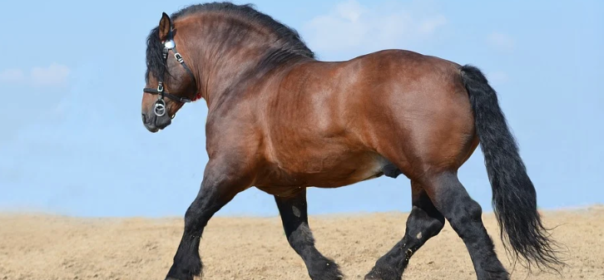
Five Health Issues Found in Draft Horses
Draft horses are beautiful creatures. Nowadays, they become more popular and their distribution is increasing. What some new owners of draft horses may not know is that both pure breeds and crossbreeds of draft horses, such as the sports horse, are subject to horse arthritis and other particular health problems that are not so typical of bland breeds. Being aware of these health problems helps prevent diseases and short period lifetime of this horse. Here are the five health issues found in draft horses.

Horse Arthritis
 Like humans, horses also suffer from joint pains as they are getting older. It can be seen in some medical signs of stiffness in their joints. It results in their failure to perform tasks that they used to do in the past. These conditions may be caused by chronic inflammation, which results in permanent degradation of the horse’s joints. To deal with this health issue, you can use NSAID drugs and perform several physical exercises to strengthen their joints, muscles, and tendons, as well as slow down their joints’ wear.
Like humans, horses also suffer from joint pains as they are getting older. It can be seen in some medical signs of stiffness in their joints. It results in their failure to perform tasks that they used to do in the past. These conditions may be caused by chronic inflammation, which results in permanent degradation of the horse’s joints. To deal with this health issue, you can use NSAID drugs and perform several physical exercises to strengthen their joints, muscles, and tendons, as well as slow down their joints’ wear.
Junctional Epidermolysis Bullosa
In this condition, the horse does not have laminin-5 skin, a fatal disease that causes the foals to deteriorate at birth within a week. The layers of skin cannot adhere to each other, and the spots on the skin and hair begin to rub together at the stress points and disperse into larger and larger spots. The moment you know you have JEB, a foal should be put to sleep because it is a debilitating disease. In 2002, researchers discovered where the receptor site of this mutation was located. Today, a DNA test can be used to determine whether all breeding animals are carriers.
Azoturia
Flogging, also called Monday morning disease, is a common metabolic disease in draft horses. It usually occurs after the horse has taken a break and then returns to work. The horse shows severe sweating symptoms, nervous behavior, rapid heartbeat, and muscle stiffness, especially in the hindquarters, shortly after the start of work. The horse shows acute pain and muscle pain. The horse’s urine is dark due to the reddish pigment in the muscle cells, released into the bloodstream when the muscle fibers divide.
If the horse is made to continue working, the symptoms worsen, and the horse also collapses. The horse may die from kidney failure because the kidneys cannot filter out enzymes that are released into the blood by the nerves. In the past, many drugs such as steroids, muscle relaxants, and dietary supplements have been used to treat the horse when it had an event. The EPSM diet has proven reasonably useful in preventing further episodes when used in this disease’s early stages. Exercise may also be important for the recovery of workhorses suffering from woodworms.
Shivers
Shivering is a neuromuscular condition found in draft horses. It is easy to diagnose due to unusual symptoms. The signs are a sudden jolt or flickering of the hindquarters, with the leg bent towards the horse’s stomach and the tail rising and shaking as the horse walks straight back. The horse cannot bend backward because the hind legs are bent upwards.
It is assumed that the tremor is hereditary. It could be a consequence of neurological injuries that are neglected in infectious diseases such as flu or nausea or could be a consequence of an injury. Treatment is limited to acupuncture, massage, and training. Unfortunately, the thrill is typically a chronic disease that gets progressively worse when the horse is still at work.
Grease Heel
Greese heel is a type of dermatitis on the back of the pastern area. This may be a less serious disease than the others mentioned, but it could be consistent with breeds of draft horses with a lot of plumage. It is more commonly found on hind legs. The symptoms are redness and fluid leaks that become scabs and scabs. It has been there for some time since it was noticed.
The remedy that you can try is to cut away all the long hair, wash the area with warm t and mild soap, then scrub the area to remove the scabs. An excellent home remedy for moderately severe cases is to pay the affected area with an ointment consisting of one piece of Neosporin, one piece of cortisone lotion, and two components of zinc oxide (baby diaper ointment). Keep the horse in a clean and dry environment—injections of antibiotics. If untreated, spread them around the edge of the crown towards the front of the foot.


